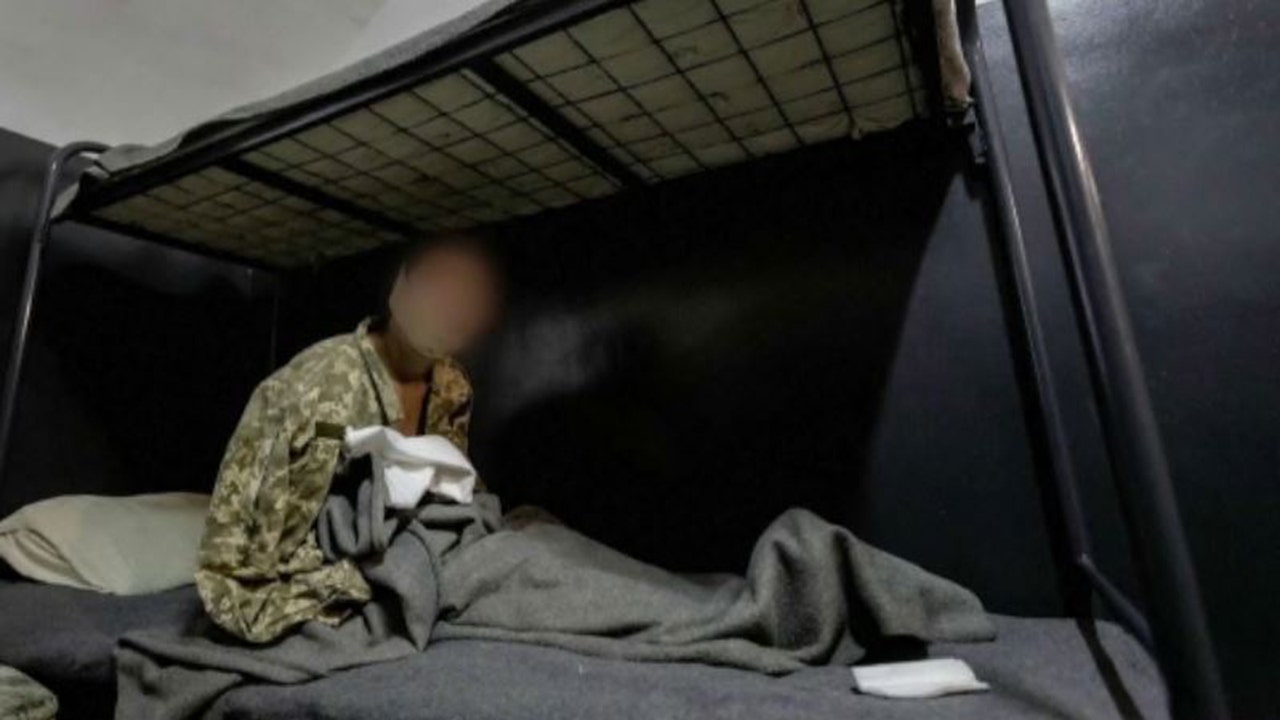World
Lawrence Wong set to take centre stage as Singapore’s new prime minister

Singapore – For the first time in 20 years, Singapore will inaugurate a new prime minister, Minister for Finance and Deputy Prime Minister Lawrence Wong, who will take the reins of power in a ceremony on Wednesday, May 15.
The 51-year-old will replace Lee Hsien Loong – the eldest son of the country’s first Prime Minister Lee Kuan Yew – who has been in the job since August 2004.
Wong is only the fourth leader in Singapore’s 59-year history as an independent nation. Like his predecessors, he is a member of the People’s Action Party (PAP), co-founded by the elder Lee and the only ruling party Singaporeans have ever known.
The stage is now set for a general election in the city-state of 6 million people, which observers say could be held as early as this year, although the term of the current government does not expire until 2025.
At the last election in 2020, the PAP secured more than 61 percent of the vote, losing just 10 seats in the 98-member parliament to the opposition, but this was considered a sub-par performance given the opposition had won only six seats in the previous parliament.
The stakes are higher now, and a new leader is traditionally expected to gain a strong mandate from voters. Wong will be tasked with maintaining the dominance of the PAP in the face of an increasingly demanding electorate who want a greater say in governance and eschew the knuckleduster tactics and paternalistic politics of previous governments.
They are also tiring of the rat race, which Wong himself has acknowledged.
Among the most pressing issues on his plate: tackling the rising cost of living, an ageing population, a slowing economy and immigration. The PAP has also been rocked by a rare corruption scandal.
In addition, Wong must navigate the ever-present China-United States rivalry as the tiny island is a key ally to both superpowers.
Who is Lawrence Wong?
The mild-mannered Wong was selected by his peers among the “4G”, or fourth generation of leaders in Singapore’s political jargon, to be a successor to 72-year-old Lee in April 2022.
Something of a compromise candidate, he was not their first choice.
That was former central bank chief and Minister for Education Heng Swee Keat, 63, who had been appointed to succeed Lee in 2018. In a country renowned for its political stability, Heng sparked a mini political crisis by stepping aside two and a half years later, citing his age and admitting that he had not felt up to the task from the start.
Unlike many of his PAP peers, Wong did not come from the island’s establishment or attend its top schools. Going to university in the US on a government scholarship, he started out as an economist in the trade and industry ministry before entering politics in 2011.
After stints as a minister in less glamorous portfolios such as national development, he was not considered a potential prime minister, but the COVID-19 pandemic changed everything.
As co-leader of the country’s COVID-19 task force, Wong emerged as the public face of the government’s pandemic response, adroitly fielding questions from foreign media outlets in televised news conferences. Such events are a rarity in a country that performs dismally in the annual World Press Freedom rankings – Singapore was ranked 126th out of 180 countries and territories this year.

“Mr Wong is seen as a technocrat, [who is] friendly and approachable. He delivered well for the COVID-19 crisis, so he can be viewed as competent,” said former PAP lawmaker Inderjit Singh, who served alongside Lee in his central Ang Mo Kio ward for two decades.
Noting that Wong was only chosen two years ago after a period of political uncertainty, he added: “Anyone in his position will have his work cut out to show that he is indeed the right leader. He has a big task to quickly show that he is indeed the right person who can deliver.”
Leadership succession
Historically, leadership succession in Singapore has been a well-oiled process, with the heir apparent announced well in advance and groomed for years. This has been facilitated by a sterling record of governance, the PAP’s longstanding parliamentary supermajority – at its peak, there were no opposition lawmakers – and its dominance of key institutions.
Heng’s sudden departure was therefore unprecedented. Wong will also have the shortest runway of all – he became Lee’s deputy just two months after being anointed his successor. By comparison, the younger Lee served as deputy prime minister for 14 years before taking over the top job.
This perhaps explains Minister of Law and Minister for Home Affairs K Shanmugam’s prickly response to what he termed a “sneering” commentary in The Economist last month, which labelled Wong a compromise candidate and the Singapore media “docile”. Weeks later, the United Kingdom weekly conducted a wide-ranging interview with Wong where he stressed that as prime minister, he would not shy away from making unpopular decisions.
“Wong comes across as being very personable. He doesn’t portray the image of a hardliner,” said former newspaper editor PN Balji, who interacted extensively with Wong’s predecessors. While he is optimistic that Wong will come to prove himself, he added: “If you look at the leadership from Lee Kuan Yew till now, the quality of leadership has declined somewhat.”

Perhaps this is why Lee Hsien Loong is not going away – he will remain in the cabinet with the title of senior minister, just as his predecessors did.
“Given the short runway, I think Wong will benefit from [Lee’s] presence, especially in helping keep [good] external relations,” said Singh.
What do Singaporeans think of him?
Despite his increased profile during the pandemic, the guitar-playing, dog-loving, social media-friendly Wong remains something of an unknown quantity to Singaporeans.
According to a recent YouGov poll, just more than half of respondents considered him competent, with less than a third agreeing that he was a strong leader. Some 40 percent said he seemed trustworthy, a number that was significantly higher among Gen Z respondents. A fifth felt hopeful about Wong’s appointment, while 36 percent stated indifference.
Many also indicated high expectations for the incoming prime minister, perhaps reflecting the fact that Singapore’s government leaders are the world’s highest-paid, with the prime minister taking home 2.2 million Singapore dollars ($1.6m) a year including bonuses.
“Wong’s biggest challenge in the short term will be to articulate an easy-to-understand, inclusive, and progressive political vision that will draw widespread support for his government in the upcoming elections,” Elvin Ong, an assistant professor at the National University of Singapore’s political science department, told Al Jazeera.
Wong, who has stressed that he did not seek out the role or expect to become leader, is certainly working hard to win over the electorate. “Every ounce of my energy shall be devoted to the service of our country and our people,” he said in a post to his 200,000-odd Instagram followers after the handover date was announced. “Your dreams will inspire my actions.”
Calling Singapore the “improbable, unlikely nation”, he told The Economist: “My mission is to keep this miracle going for as long as I can.”

World
India kicks off a massive Hindu festival touted as the world's largest religious gathering
PRAYAGRAJ, India (AP) — Millions of Hindu devotees, mystics and holy men and women from all across India flocked to the northern city of Prayagraj on Monday to kickstart the Maha Kumbh festival, which is being touted as the world’s largest religious gathering.
Over about the next six weeks, Hindu pilgrims with gather at the confluence of three sacred rivers — the Ganges, the Yamuna and the mythical Saraswati — where they will take part in elaborate rituals, hoping to begin a journey to achieve Hindu philosophy’s ultimate goal: the release from the cycle of rebirth.
Here’s what to know about the festival:
A religious gathering at the confluence of three sacred rivers
Hindus venerate rivers, and none more so than the Ganges and the Yamuna. The faithful believe that a dip in their waters will cleanse them of their past sins and end their process of reincarnation, particularly on auspicious days. The most propitious of these days occur in cycles of 12 years during a festival called the Maha Kumbh Mela, or pitcher festival.
The festival is a series of ritual baths by Hindu sadhus, or holy men, and other pilgrims at the confluence of three sacred rivers that dates to at least medieval times. Hindus believe that the mythical Saraswati river once flowed from the Himalayas through Prayagraj, meeting there with the Ganges and the Yamuna.
Bathing takes place every day, but on the most auspicious dates, naked, ash-smeared monks charge toward the holy rivers at dawn. Many pilgrims stay for the entire festival, observing austerity, giving alms and bathing at sunrise every day.
“We feel peaceful here and attain salvation from the cycles of life and death,” said Bhagwat Prasad Tiwari, a pilgrim.
The festival has its roots in a Hindu tradition that says the god Vishnu wrested a golden pitcher containing the nectar of immortality from demons. Hindus believe that a few drops fell in the cities of Prayagraj, Nasik, Ujjain and Haridwar — the four places where the Kumbh festival has been held for centuries.
The Kumbh rotates among these four pilgrimage sites about every three years on a date prescribed by astrology. This year’s festival is the biggest and grandest of them all. A smaller version of the festival, called Ardh Kumbh, or Half Kumbh, was organized in 2019, when 240 million visitors were recorded, with about 50 million taking a ritual bath on the busiest day.
Maha Kumb is the world’s largest such gathering
At least 400 million people — more than the population of the United States — are expected in Prayagraj over the next 45 days, according to officials. That is around 200 times the 2 million pilgrims that arrived in the Muslim holy cities of Mecca and Medina in Saudi Arabia for the annual Hajj pilgrimage last year.
The festival is a big test for Indian authorities to showcase the Hindu religion, tourism and crowd management.
A vast ground along the banks of the rivers has been converted into a sprawling tent city equipped with more 3,000 kitchens and 150,000 restrooms. Divided into 25 sections and spreading over 40 square kilometers (15 square miles), the tent city also has housing, roads, electricity and water, communication towers and 11 hospitals. Murals depicting stories from Hindu scriptures are painted on the city walls.
Indian Railways has also introduced more than 90 special trains that will make nearly 3,300 trips during the festival to transport devotees, beside regular trains.
About 50,000 security personnel — a 50% increase from 2019 — are also stationed in the city to maintain law and order and crowd management. More than 2,500 cameras, some powered by AI, will send crowd movement and density information to four central control rooms, where officials can quickly deploy personnel to avoid stampedes.
The festival will boost Modi’s support base
India’s past leaders have capitalized on the festival to strengthen their relationship with the country’s Hindus, who make up nearly 80% of India’s more than 1.4 billion people. But under Prime Minister Narendra Modi, the festival has become an integral part of its advocacy of Hindu nationalism. For Modi and his party, Indian civilization is inseparable from Hinduism, although critics say the party’s philosophy is rooted in Hindu supremacy.
The Uttar Pradesh state, headed by Adityanath — a powerful Hindu monk and a popular hard-line Hindu politician in Modi’s party — has allocated more than $765 million for this year’s event. It has also used the festival to boost his and the prime minister’s image, with giant billboards and posters all over the city showing them both, alongside slogans touting their government welfare policies.
The festival is expected to boost the ruling Hindu nationalist Bharatiya Janata Party’s past record of promoting Hindu cultural symbols for its support base. But recent Kumbh gatherings have also been caught in controversies.
Modi’s government changed the city’s Mughal-era name from Allahabad to Prayagraj as part of its Muslim-to-Hindu name-changing effort nationwide ahead of the 2019 festival and the national election that his party won. In 2021, his government refused to call off the festival in Haridwar despite a surge in coronavirus cases, fearing a backlash from religious leaders in the Hindu-majority country.
——
Associated Press religion coverage receives support through the AP’s collaboration with The Conversation US, with funding from Lilly Endowment Inc. The AP is solely responsible for this content.
World
Ukraine has captured 2 North Korean soldiers, South Korea's intelligence service says

Ukraine captured two wounded North Korean soldiers who were fighting on behalf of Russia in a Russian border region, South Korea’s intelligence service said, confirming an account from Ukrainian President Volodymyr Zelenskyy on Saturday.
Seoul’s National Intelligence Service (NIS) told AFP it has “confirmed that the Ukrainian military captured two North Korean soldiers on January 9 in the Kursk battlefield in Russia.”
The confirmation comes after Zelenskyy said in a post on the Telegram messaging app that the two captured North Korean soldiers were wounded and taken to Kyiv, where they are communicating with Ukrainian security services SBU.
SBU released video that appears to show the two prisoners on beds inside jail cells. The authenticity of the video could not be independently verified.
TRUMP’S DESIGNATED SPECIAL ENVOY FOR UKRAINE AND RUSSIA SETS LONGER TIMETABLE THAN ‘24 HOURS’ FOR ENDING WAR
In this unverified photo shared by the Ukrainian military, an apparent captured North Korean soldier with injuries is sitting in a bed inside a cell. (Ukraine Military handout)
A doctor interviewed in the SBU video said one soldier suffered a facial wound while the other soldier had an open wound and a lower leg fracture. Both men were receiving medical treatment.

In this unverified photo shared by the Ukrainian military, an apparent captured North Korean soldier with injuries is lying in a bed inside a cell. (Ukraine Military handout)
SBU also said one of the soldiers had no documents at all, while the other had been carrying a Russian military ID card in the name of a man from Tuva, a Russian region bordering Mongolia.
Ukraine’s military says North Korean soldiers are outfitted in Russian military uniforms and carry fake military IDs in their pockets, a scheme that Andrii Yusov, spokesperson for Ukraine’s military intelligence agency, says could mean Moscow and “its representatives at the U.N. can deny the facts.”
Despite Ukrainian, U.S. and South Korean assertions that Pyongyang has sent 10,000 – 12,000 troops to fight alongside Russia in the Kursk border region, Moscow has never publicly acknowledged the North Korean forces.
TRUMP SETTING UP MEETING WITH PUTIN, IN COMMUNICATION WITH XI
While reports of their presence first emerged in October, Ukrainian troops only confirmed engagement on the ground in December.
On Thursday, Zelenskyy put the number of killed or wounded North Koreans at 4,000, though U.S. estimates are lower, at around 1,200.

Soldiers are seen at Kim Il Sung Square in Pyongyang, North Korea, on Oct. 12, 2020. (AP Photo/Jon Chol Jin, File)
Despite North Korea’s suffering losses and initial inexperience on the battlefield, Ukrainian soldiers, military intelligence and experts suggest first-hand experience will only help them develop further as a fighting force.
CLICK TO GET THE FOX NEWS APP
“For the first time in decades, the North Korean army is gaining real military experience,” Yusov said. “This is a global challenge — not just for Ukraine and Europe, but for the entire world.”
The Associated Press contributed to this report.
World
Three people killed in an avalanche in Italy's Leopontine Alps

A group of five skiers was hit by the avalanche above the village of Trasquera in the Piedmont region. Two survived and were helicoptered to hospital.
The avalanche broke away around 12.30pm on the eastern face of Punta Valgrande, a summit in the Leopontine Alps, on the border between Italy and Switzerland.
The skiers who died were dragged down the snowy mountain for several hundred metres from where they had been skiing at over 2,800 metres. The bodies have not yet been recovered because they are awaiting authorisation from the local magistrate.
An alert had been issued in the area above 2,100 metres, which warned of “considerable danger of avalanches.” The alert was at level 3, with 5 being the most dangerous.
It is not yet clear whether the rescuers were alerted by a skier who saw the avalanche sweeping away three people, or by the other two people who managed to save themselves. According to reports, the group was going uphill with crampons and then descending with skis.
-

 Politics1 week ago
Politics1 week agoCarter's judicial picks reshaped the federal bench across the country
-

 Politics1 week ago
Politics1 week agoWho Are the Recipients of the Presidential Medal of Freedom?
-

 Health1 week ago
Health1 week agoOzempic ‘microdosing’ is the new weight-loss trend: Should you try it?
-
/cdn.vox-cdn.com/uploads/chorus_asset/file/25822586/STK169_ZUCKERBERG_MAGA_STKS491_CVIRGINIA_A.jpg)
/cdn.vox-cdn.com/uploads/chorus_asset/file/25822586/STK169_ZUCKERBERG_MAGA_STKS491_CVIRGINIA_A.jpg) Technology4 days ago
Technology4 days agoMeta is highlighting a splintering global approach to online speech
-

 News1 week ago
News1 week agoSeeking to heal the country, Jimmy Carter pardoned men who evaded the Vietnam War draft
-

 Science2 days ago
Science2 days agoMetro will offer free rides in L.A. through Sunday due to fires
-

 News1 week ago
News1 week agoTrump Has Reeled in More Than $200 Million Since Election Day
-

 News1 week ago
News1 week agoThe U.S. Surgeon General wants cancer warnings on alcohol. Here's why
















